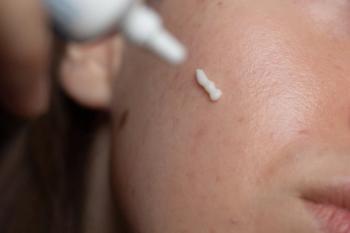
Calling for Collective Investment and Action in Lichen Planus Care
In part 3 of this conversation, Adam Friedman, MD, FAAD, discusses the need for unity in advancing lichen planus care and research.
In part 3 of this interview with Dermatology Times, Adam Friedman, MD, FAAD, professor and chair of dermatology at the George Washington University School of Medicine and Health Sciences, emphasized the urgent need for industry involvement, organized advocacy, and collaborative action to improve outcomes for patients with lichen planus.
This latest discussion builds on prior conversations:
Now, Friedman broadens the lens to examine what must happen next.
A Call to Action
“To me, this study is a call to action,” Friedman said, “because there are so many different gaps and the need is quite clear.”
The survey, recently published in Dermatology and Therapy, revealed widespread variability in clinical practices, a lack of standardized protocols, and inconsistent use of emerging treatments. For Friedman, these findings signal not only a therapeutic vacuum but also a communitywide opportunity.
“I think there are a couple different ways that we as a community can go about better helping our colleagues,” he says, “but ultimately helping patients...with lichen planus.”
Industry Involvement as a Catalyst
Friedman is candid about the role pharmaceutical companies must play to move the needle in lichen planus care.
“I think first and foremost, though—and this is just being perfectly open and transparent—when industry pays attention to a disease, the wheels start turning,” he says. “It’s just the way of the world. It’s just a reality.”
He points to progress in other conditions as precedent: “We’ve seen that with atopic [dermatits]. We’ve seen that with hidradenitis [suppurativa]. We’re now seeing it with chronic spontaneous urticaria.”
The challenge, then, is how to get lichen planus on the radar of biotech and pharma leaders.
“First things first, we need our industry partners to be invested,” Friedman said. “And maybe that’s on us to get them excited about it.”
Building the Framework: Societies, Podiums, and Guidelines
Beyond industry, Friedman believes medical societies must also rise to the occasion.
“Maybe it’s our dermatologic societies, like the American Academy of Dermatology,” he said. “Or maybe smaller regional societies that can make sure that lichen planus is front and center with podium time.”
He envisions tangible steps forward, such as the creation of a consensus statement or treatment guidelines.
“Those things take a lot of time and energy,” he said, “but I think that we have to do something.”
Aligning Multiple Tracks Toward Progress
“There’s not a one-size-fits-all,” Friedman said. “But I think that we need some parallel tracks happening simultaneously to make sure that we are really following the evidence.”
The evidence base for lichen planus, he says, remains limited. He also emphasized the importance of identifying specific patient subgroups that might respond better to certain treatments.
Friedman’s tone balances urgency with optimism: “We can get together and advocate for these patients. We have to tap into that industrial interest. I think that will then trickle down to the rest: the community.”
References
- Study reveals gaps in screening and treatment practices for a chronic inflammatory skin condition among US dermatologists. News release. George Washington University. April 25, 2025. Accessed June 2, 2025.
https://mediarelations.gwu.edu/study-reveals-gaps-screening-and-treatment-practices-chronic-inflammatory-skin-condition-among-us - Vidal SI, Menta N, Friedman A. Lichen planus: a cross-sectional evaluation of US dermatologists’ comorbidity screening and management patterns. Dermatol Ther (Heidelb). 2025;15:1455-1465.
doi:10.1007/s13555-025-01422-1
Newsletter
Like what you’re reading? Subscribe to Dermatology Times for weekly updates on therapies, innovations, and real-world practice tips.


















